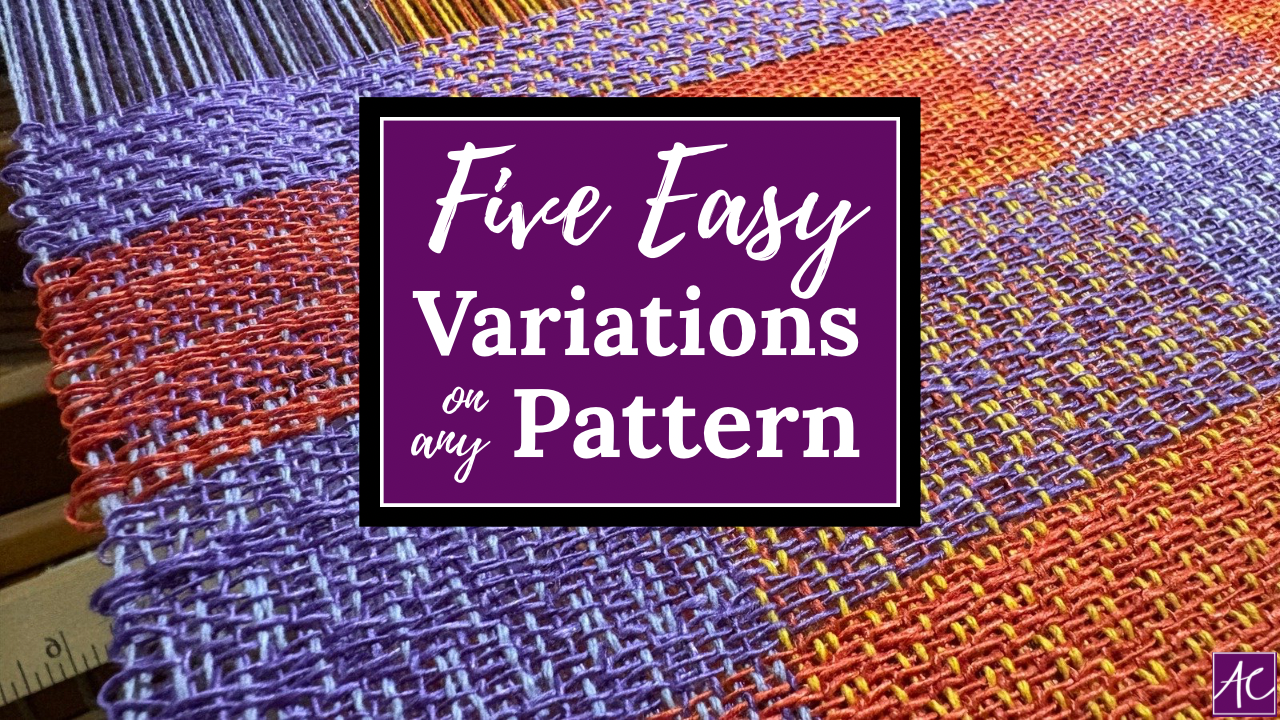Weaving!
It’s finally time to weave! We’ve traveled together through all the steps to dress the loom. And now, it’s time for some weaving! In this video, which is part 6 in our 7-part series, I will show you how it all comes together into a weaving project. I will create fabric right before your very eyes. Pretty magical!
I’ll tell you a little about technique, and a little about materials. Plus, I’ll identify all the steps that came before and explain why they were important. And mostly, I’ll toss the shuttle to & fro, and add a few inches to our project while we chat! I hope you enjoy Episode 10 of “A Handwoven Experience”. Happy Weaving!
Show Notes –
- Planning a project is the 1st step of a weaving project, which include 3 goals – 1) deciding the length of the warp yarns 2) counting how many warp yarns will be in the project, and 3) determining the order.
- Warping a project is the 2nd step of a weaving project where each warp yarn is measured to the same length, and in the correct order. (Typically, this is done on a warping board or mill.)
- Warp refers to the yarns that are in the loom and under tension.
- Sleying the reed is the 3rd step of a weaving project. Each warp yarn is assigned to a slot (dent) in a reed. The reed’s job is to keep the project at a consistent width in the loom, which is key.
- Threading the heddles is the 4th step of a weaving project when each warp yarn is paired with a shaft in the loom. This step helps set up the options for the pattern of the fabric.
- Heddles are thin, metal strips (by the way, they aren’t always metal, but mine are!) with an eye in the middle that slide along a top and bottom rail in each shaft of the loom. Each warp yarn goes into a heddle on a specific shaft, therefore determining when it will lift up in the weaving pattern.
- Shaft is a frame in the loom that lifts and lowers, separating yarns which will then create the weaving pattern.
- Winding on is the 5th step of the weaving process. The entire warp is shifted through the loom and then tied on to the back. (Requires a bit of balance and a smidgen of patience.)
- Weaving is the 6th step of a weaving project. In this step, yarns are lifted and lowered, depending on what shaft they are on. A shuttle is tossed from side-to-side, releasing the weft yarn into the fabric. And the beater bar is pulled forward to position the weft yarns and tighten the fabric.
- Treadles are pedals below the loom that are connected to the shafts.
- Plain weave is the simplest weaving pattern – over, under, over, under (think potholders!).
- Weft refers to yarns that are in the shuttle.
- Shuttle is an item that holds the weft yarns that travel back and forth across the warp to create fabric.
- Rag shuttle is a type of shuttle where the weft yarns are wound directly on it, instead of on a bobbin. This type of shuttle is typically larger than a stick or boat shuttle.
- Beater bar is a large piece at the front of the loom that moves forward and back. It is important because it serves 2 purposes – 1) to hold the reed, and 2) to tighten the yarns in the fabric.
A little something extra –
To counteract any creative stagnation during these difficult times, click here to access your free, “25 Weaving Challenges to Beat the Quarantine Doldrums”! And Happy Weaving!



